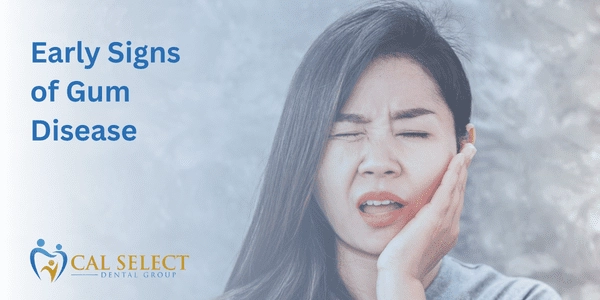
Gum disease, also known as periodontal disease, is a common yet potentially serious condition that affects millions of people worldwide. According to the CDC, 47% of adults over 30 have some form of it.
From a dental office's perspective, we understand the importance of early detection and intervention to prevent gum disease from progressing into more severe stages. So, we decided to highlight the warning signs of gum disease that you should never ignore.
1. Persistent Bad Breath (Halitosis):
One of the earliest signs of gum disease is persistent bad breath that doesn't seem to go away, even with proper oral hygiene practices. The foul odor is often caused by bacteria accumulating in the pockets between your teeth and gums, releasing sulfur compounds that lead to bad breath.
2. Bleeding Gums:
Healthy gums should not bleed when you brush or floss. If you notice blood on your toothbrush or dental floss, it could be a sign of gum disease. Bleeding gums are typically a result of inflammation and infection in the gum tissue.
3. Swollen or Red Gums:
Healthy gums should appear pink and firm. If your gums appear swollen, red, or puffy, it could be a sign of inflammation, which is a common early symptom of gum disease. Healthy gums should not be painful or tender to the touch.
4. Gum Recession:
Gum disease can cause your gum tissue to recede or pull away from the teeth. This can make your teeth appear longer than normal and expose the tooth roots. Gum recession can lead to tooth sensitivity and further dental issues if left untreated.
5. Changes in Tooth Alignment:
As gum disease progresses, it can affect the supporting structures of your teeth, including the bone. This can result in changes in tooth alignment and spacing. If you notice that your teeth are shifting or becoming loose, seek dental attention.
6. Pus Between Teeth and Gums:
The presence of pus or discharge between your teeth and gums is a definite sign of advanced gum disease. This is a clear indication of an active infection that requires dental treatment.
7. Sensitivity to Hot and Cold:
Gum disease can cause gum recession and expose the tooth roots. This can lead to increased sensitivity to hot and cold foods and beverages. If you find yourself wincing from tooth pain, especially when consuming hot or cold items, it's time to see your dentist.
8. Changes in Bite or Tooth Mobility:
In advanced stages of gum disease, the supporting bone and tissues around your teeth can deteriorate, leading to changes in your bite and tooth mobility. You may notice that your bite feels different or that some teeth seem to be shifting or loosening.
9. Sores in the Mouth:
Painful sores or abscesses in the mouth can be a sign of severe gum disease. These sores may be accompanied by pus and require immediate attention.
10. Family History of Gum Disease:
If you have a family history of gum disease, you may be at a higher risk. Genetics can play a role in your susceptibility to gum problems, so it's crucial to be vigilant about monitoring your oral health.
Ignoring the warning signs of gum disease can lead to serious oral health issues, including tooth loss and systemic health problems. If you notice any of these signs or symptoms, schedule an appointment with your dentist ASAP. Early intervention can help manage and even reverse gum disease in its milder stages, preserving your oral health and overall well-being.
Remember, regular dental check-ups and good oral hygiene practices, such as brushing, flossing, and using an antiseptic mouthwash, are your best defenses against gum disease. Don't wait until it's too late—take proactive steps to protect your smile and maintain excellent oral health!
